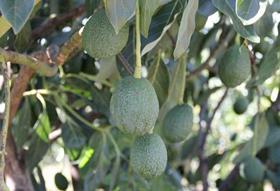
Severe drought continues to threaten millions across East Africa, with crop harvests significantly down and food prices doubling in countries including Kenya, Somalia and Ethiopia.
Largely responsible is a climate phenomenon dubbed the “Indian Ocean Dipole”, the lesser-known Indian equivalent of El Niño, a phenomenon that is reportedly worsening with the effects of climate change.
In the eastern region of Ethiopia, authorities say 5.6m people are in urgent need of assistance, while charity Save The Children has reported the arrival of malnourished refugees from neighbouring Somalia.
Last month, Kenyan president Uhuru Kenyatta declared the drought a national disaster, making a fresh appeal to the international community to increase food aid.
In Kenya, an estimated 2.7m are affected by the drought, with dozens of Chinese firms based in the Makueni County recently donating food, oil and water to its victims.
“It has had a huge impact,” says Abdirahman Harir of exporter Harir International in the country’s central Murang'a County. “We are currently trying to assess the situation with our European buyers. We should be having rains at the moment. For the last month, we have been getting ready for the rain, setting up our irrigation systems, but we have had none. The last rain we saw was in late September, but some areas have gone without for much longer.”
For Harir, the lack of rain is predominantly hitting the avocado crop. “The delay to the rains is affecting the quality and the total volume,” he says. “It is leading to smaller sized fruit and the drying-out of trees. Some of the trees have no fruit on them at all.”
For other Kenyan companies, he says, beans and various vegetables are also drying up. “The northern part of Kenya by Somalia is especially badly hit,” says Harir. “People are dying from a lack of water. Somalia itself is even worse, as the drought has been even more prolonged.”
In Somalia, an estimated 5m people, more than 40 per cent of the population, are in need of food and livelihoods assistance.
Ethiopia has fared somewhat better than its East African neighbours due to various interventions implemented by the government. In January, the government launched the Humanitarian Requirements Document (HRD) for 2017, seeking an estimated US$948m to meet the needs of 5.6m people for emergency food and non-food assistance.
A spokesperson from major Ethiopian producer and exporter Jittu Horticulture said that the company was well protected from the drought due to its irrigation techniques and use of greenhouses.
For the whole of East Africa, however, the fear of ever-worsening droughts looms. Macharia Kamau, Kenya’s permanent representative to the United Nations and an expert on climate change, said that such devastating events were becoming “more severe”, “less predictable” and were occurring “more often”.



